-
 Bitcoin
Bitcoin $85,620.5431
0.86% -
 Ethereum
Ethereum $1,897.3122
-0.11% -
 Tether USDt
Tether USDt $1.0002
0.02% -
 XRP
XRP $2.1269
0.07% -
 BNB
BNB $601.9446
-1.02% -
 Solana
Solana $129.2221
2.97% -
 USDC
USDC $0.9999
-0.01% -
 Dogecoin
Dogecoin $0.1725
0.66% -
 Cardano
Cardano $0.6822
1.06% -
 TRON
TRON $0.2380
0.58% -
 Toncoin
Toncoin $3.9628
-1.77% -
 Chainlink
Chainlink $13.8245
-1.78% -
 UNUS SED LEO
UNUS SED LEO $9.4229
0.68% -
 Stellar
Stellar $0.2688
-1.15% -
 Sui
Sui $2.4659
2.25% -
 Avalanche
Avalanche $19.2191
-0.67% -
 Shiba Inu
Shiba Inu $0.0...01259
-0.08% -
 Hedera
Hedera $0.1738
2.43% -
 Litecoin
Litecoin $85.8036
1.94% -
 Polkadot
Polkadot $4.1113
-0.65% -
 MANTRA
MANTRA $6.4509
2.66% -
 Bitcoin Cash
Bitcoin Cash $307.3141
-0.43% -
 Bitget Token
Bitget Token $4.5887
-0.44% -
 Dai
Dai $0.9996
-0.05% -
 Ethena USDe
Ethena USDe $0.9999
0.00% -
 Pi
Pi $0.6755
-4.64% -
 Hyperliquid
Hyperliquid $13.5037
1.72% -
 Monero
Monero $220.7326
1.83% -
 Uniswap
Uniswap $6.2125
-0.90% -
 Aptos
Aptos $5.3963
0.94%
How to extend the life of mining graphics cards through hardware transformation?
Effective cooling, VRM optimization, and regular maintenance are crucial for extending the lifespan of GPUs used in cryptocurrency mining.
Mar 27, 2025 at 11:00 pm

Understanding GPU Degradation in Cryptocurrency Mining
Cryptocurrency mining, particularly with proof-of-work algorithms, puts immense strain on graphics cards (GPUs). The constant high temperatures and intensive processing lead to accelerated wear and tear. This isn't just about the fans wearing out; it's about the degradation of components like the GPU core, memory modules (VRAM), and power delivery system (VRM). Understanding these failure points is crucial for effective preventative maintenance.
Cooling Enhancements: The First Line of Defense
Effective cooling is paramount in extending the lifespan of your mining GPUs. High temperatures are the biggest enemy. Simple upgrades can significantly improve cooling.
Replace Stock Cooler: Factory coolers are often inadequate for the demands of mining. Consider upgrading to a high-performance air cooler or a water cooling solution (AIO or custom loop). This provides significantly better heat dissipation.
Improve Case Airflow: Ensure your mining rig has excellent airflow. Add more case fans, strategically placed to maximize airflow over the GPUs and other components. Consider using low-noise, high-cfm fans for optimal performance.
Clean Regularly: Dust buildup acts as an insulator, hindering heat dissipation. Regularly clean your GPUs and the entire mining rig with compressed air to maintain optimal cooling performance.
Power Supply and VRM Optimization
The VRM (Voltage Regulator Module) is a critical component that can fail under prolonged high stress. Improving its cooling and stability is vital.
VRM Heatsinks: Add aftermarket heatsinks to your VRM. These dissipate heat more effectively than the stock solution, reducing temperatures and extending lifespan. Ensure proper thermal paste application for optimal contact.
Higher Quality Power Supply: A stable and reliable power supply is essential. A high-quality PSU with sufficient wattage and robust protection features will prevent power surges and fluctuations that can damage your GPUs. Avoid overloading the PSU.
Underclocking: Slightly reducing the core clock and memory clock speeds can significantly reduce the heat generated by the GPU, lessening the strain on the VRM and extending its life.
Memory Module (VRAM) Considerations
VRAM is another critical component that can fail due to heat and stress. While direct hardware modifications are limited, preventative measures are key.
Improved Cooling: While direct cooling of VRAM is often difficult, ensuring adequate airflow around the GPU helps keep the VRAM cooler. Consider adding small heatsinks to the VRAM modules if your cooler allows for it.
Memory Clock Underclocking: Similar to the core clock, underclocking the memory clock reduces heat and stress on the VRAM. This can significantly extend its lifespan.
Monitoring VRAM Temperatures: Regularly monitor your VRAM temperatures using monitoring software. High temperatures are a warning sign of potential problems.
Preventive Maintenance and Monitoring
Regular maintenance is crucial for extending the life of your mining GPUs. This goes beyond just cleaning.
Regular Monitoring: Use monitoring software to track GPU temperatures, fan speeds, and power consumption. This allows for early detection of potential issues.
Firmware Updates: Keep your GPU drivers and BIOS updated. Manufacturers often release updates that improve stability and performance, potentially extending the lifespan of your cards.
Avoid Overclocking: While overclocking can increase mining profitability, it significantly increases the stress on your GPUs, reducing their lifespan. Avoid extreme overclocking.
Hardware Modifications: Advanced Techniques (Proceed with Caution)
Advanced modifications require expertise and should only be attempted by experienced users. Improper modifications can permanently damage your GPUs.
Reballing: Reballing involves replacing the solder balls on the GPU die. This is a complex process that requires specialized equipment and skills. It's generally not recommended unless you have extensive experience.
Replacing Components: Replacing damaged components like capacitors or MOSFETs on the VRM requires advanced soldering skills and a thorough understanding of electronics. Incorrect repairs can be disastrous.
Custom Loop Water Cooling: A custom loop water cooling system offers superior cooling performance, but it's complex to design, build, and maintain. Leaks can cause irreparable damage.
Frequently Asked Questions
Q: Can I extend the life of my mining GPUs indefinitely?
A: No, GPUs have a finite lifespan. Even with preventative measures, they will eventually degrade and fail. The goal is to extend their operational life as much as possible.
Q: What is the most important factor in extending GPU lifespan in mining?
A: Effective cooling is the most critical factor. High temperatures are the primary cause of GPU degradation.
Q: Are there any software-based methods to extend GPU lifespan?
A: Yes, underclocking, limiting power consumption, and using monitoring software to prevent overheating are software-based methods that can extend lifespan.
Q: How often should I clean my mining rig?
A: Ideally, you should clean your mining rig at least once a month, or more frequently depending on your environment.
Q: Is it worth investing in high-end cooling solutions for mining GPUs?
A: Yes, the cost of high-end cooling solutions is often justified by the extended lifespan and increased stability they provide, resulting in reduced replacement costs.
Q: What are the signs of a failing GPU?
A: Signs include unusual noises (coil whine), high temperatures, artifacts on screen, crashes, and performance degradation.
Q: Should I replace my GPUs proactively?
A: Proactive replacement might be necessary based on the age and condition of your GPUs and the overall cost-benefit analysis considering repair and replacement costs.
Disclaimer:info@kdj.com
The information provided is not trading advice. kdj.com does not assume any responsibility for any investments made based on the information provided in this article. Cryptocurrencies are highly volatile and it is highly recommended that you invest with caution after thorough research!
If you believe that the content used on this website infringes your copyright, please contact us immediately (info@kdj.com) and we will delete it promptly.
- DoubleZero Protocol Launches Validator Funding Round, Targeting Existing Solana, Celestia, Sui, Aptos, and Avalanche Validators
- 2025-04-03 05:05:12
- This Classic Chart Pattern Could Send SUI Price Soaring: Expert Reveals the Key Level
- 2025-04-03 05:05:12
- Bitcoin Pepe (BPEP) is rewriting the rules of DeFi
- 2025-04-03 05:00:14
- The NFT marketplace X2Y2 is indeed scheduled to shut down its operations on April 30, 2025
- 2025-04-03 05:00:14
- Bitcoin's History During Market Turmoil Does Not Necessarily Encourage Its Chances of Success This Time
- 2025-04-03 04:55:12
- Bitcoin (BTC) price rallies by 5.53% as spot bids drive the market's bullish start to Q2
- 2025-04-03 04:55:12
Related knowledge
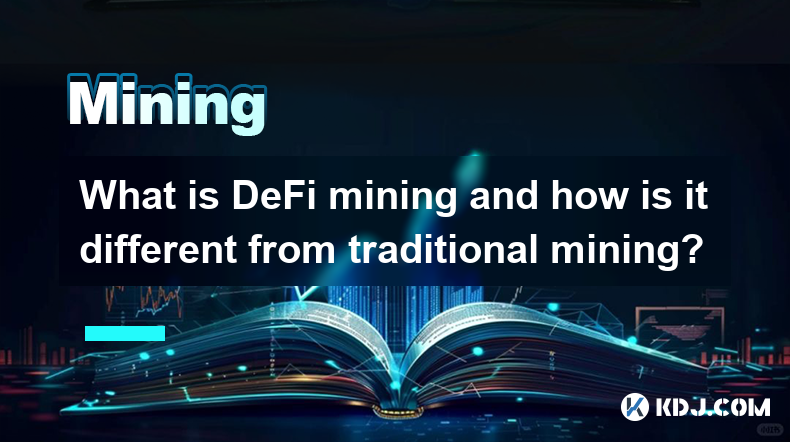
What is DeFi mining and how is it different from traditional mining?
Apr 02,2025 at 09:50am
DeFi mining, also known as yield farming or liquidity mining, is a process within the decentralized finance (DeFi) ecosystem where users provide liquidity to decentralized platforms in exchange for rewards. Unlike traditional mining, which involves solving complex mathematical problems to validate transactions and add them to a blockchain, DeFi mining f...
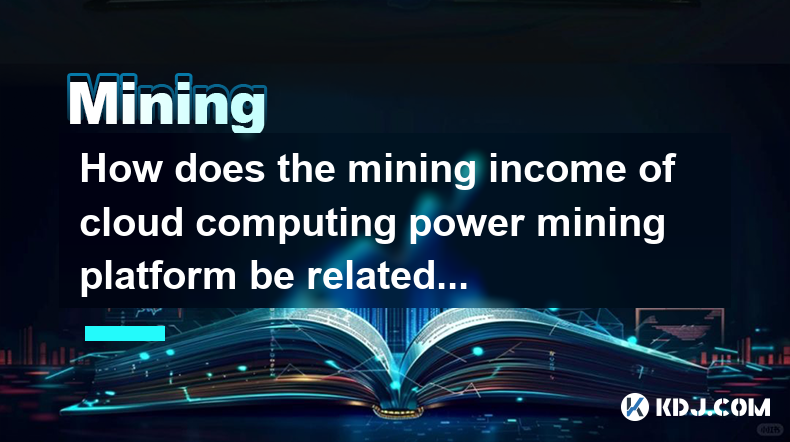
How does the mining income of cloud computing power mining platform be related to mining pool allocation?
Apr 02,2025 at 01:56am
The relationship between the mining income of a cloud computing power mining platform and the allocation of mining pools is a crucial aspect of cryptocurrency mining. Mining income is influenced by various factors such as the efficiency of the mining hardware, electricity costs, and the specific cryptocurrency being mined. However, the allocation of min...
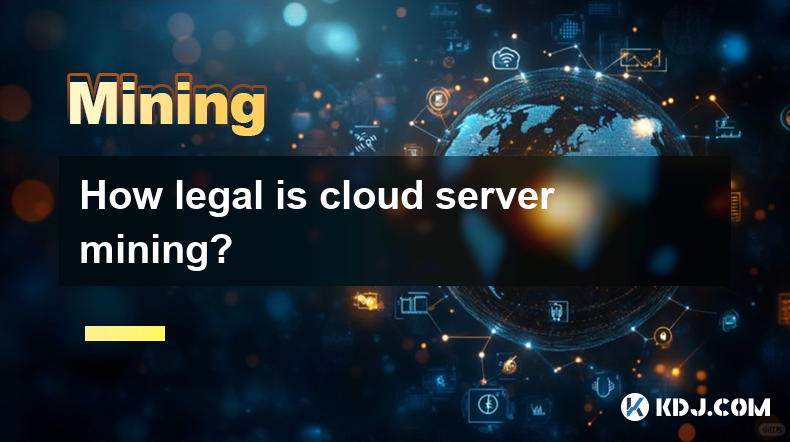
How legal is cloud server mining?
Apr 01,2025 at 08:08am
Cloud server mining has become an increasingly popular method for individuals and companies to participate in cryptocurrency mining without the need for expensive hardware and high electricity costs. However, the legality of cloud server mining can be a complex issue, as it varies by jurisdiction and depends on several factors. This article will explore...
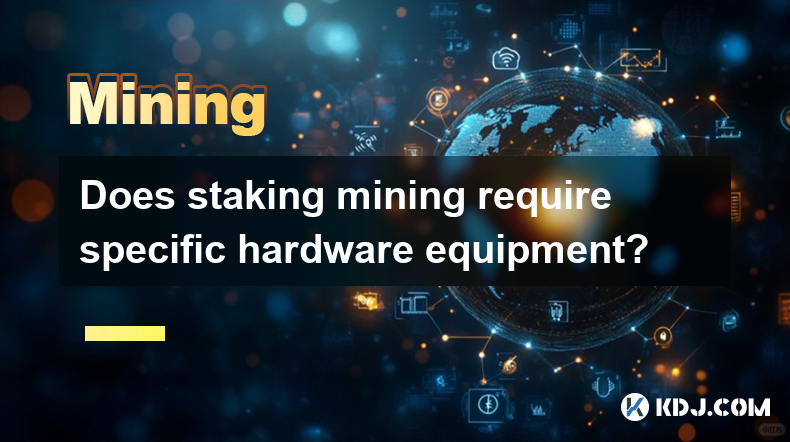
Does staking mining require specific hardware equipment?
Apr 02,2025 at 08:21am
Staking mining, often referred to simply as staking, is a process used by various cryptocurrencies to secure their networks and validate transactions. Unlike traditional mining, which often requires specialized hardware like ASICs (Application-Specific Integrated Circuits) or high-performance GPUs (Graphics Processing Units), staking typically does not ...
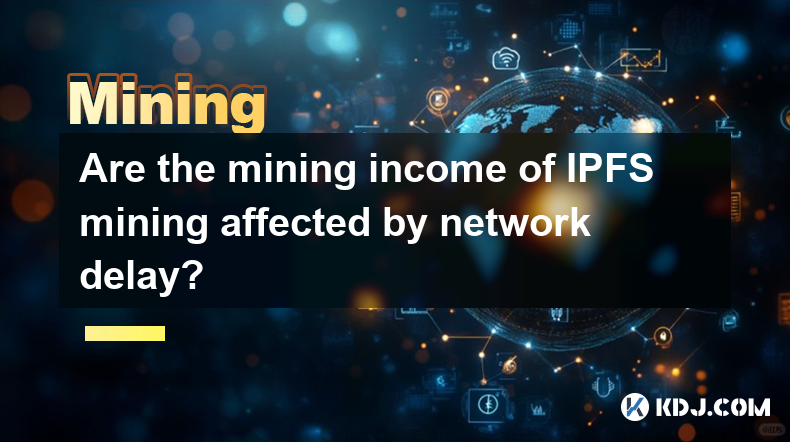
Are the mining income of IPFS mining affected by network delay?
Apr 01,2025 at 09:36pm
Are the Mining Incomes of IPFS Mining Affected by Network Delay? Understanding IPFS Mining and Network Delay's ImpactIPFS (InterPlanetary File System) mining, unlike Bitcoin mining, doesn't involve solving complex cryptographic puzzles. Instead, it focuses on providing storage and bandwidth to the network. Miners earn rewards for storing and sharing dat...
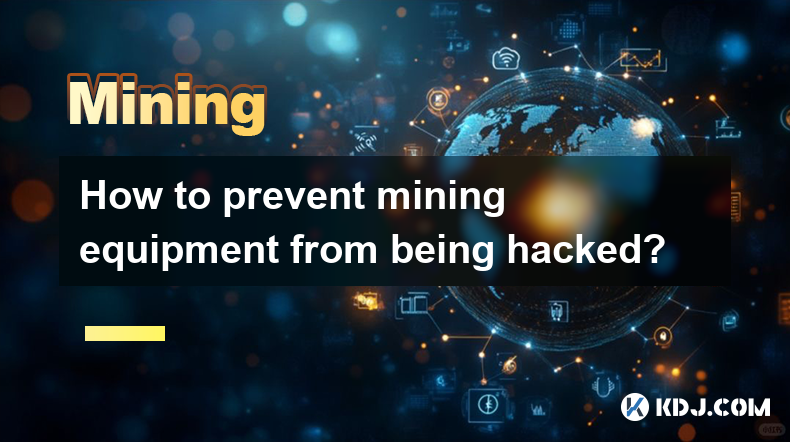
How to prevent mining equipment from being hacked?
Apr 01,2025 at 06:22am
Understanding the ThreatsCryptocurrency mining, while potentially lucrative, exposes your equipment to various cyber threats. These threats range from simple malware infections that steal your mining profits to sophisticated attacks that hijack your entire operation. Understanding these threats is the first step in effective protection. This includes r...

What is DeFi mining and how is it different from traditional mining?
Apr 02,2025 at 09:50am
DeFi mining, also known as yield farming or liquidity mining, is a process within the decentralized finance (DeFi) ecosystem where users provide liquidity to decentralized platforms in exchange for rewards. Unlike traditional mining, which involves solving complex mathematical problems to validate transactions and add them to a blockchain, DeFi mining f...

How does the mining income of cloud computing power mining platform be related to mining pool allocation?
Apr 02,2025 at 01:56am
The relationship between the mining income of a cloud computing power mining platform and the allocation of mining pools is a crucial aspect of cryptocurrency mining. Mining income is influenced by various factors such as the efficiency of the mining hardware, electricity costs, and the specific cryptocurrency being mined. However, the allocation of min...

How legal is cloud server mining?
Apr 01,2025 at 08:08am
Cloud server mining has become an increasingly popular method for individuals and companies to participate in cryptocurrency mining without the need for expensive hardware and high electricity costs. However, the legality of cloud server mining can be a complex issue, as it varies by jurisdiction and depends on several factors. This article will explore...

Does staking mining require specific hardware equipment?
Apr 02,2025 at 08:21am
Staking mining, often referred to simply as staking, is a process used by various cryptocurrencies to secure their networks and validate transactions. Unlike traditional mining, which often requires specialized hardware like ASICs (Application-Specific Integrated Circuits) or high-performance GPUs (Graphics Processing Units), staking typically does not ...

Are the mining income of IPFS mining affected by network delay?
Apr 01,2025 at 09:36pm
Are the Mining Incomes of IPFS Mining Affected by Network Delay? Understanding IPFS Mining and Network Delay's ImpactIPFS (InterPlanetary File System) mining, unlike Bitcoin mining, doesn't involve solving complex cryptographic puzzles. Instead, it focuses on providing storage and bandwidth to the network. Miners earn rewards for storing and sharing dat...

How to prevent mining equipment from being hacked?
Apr 01,2025 at 06:22am
Understanding the ThreatsCryptocurrency mining, while potentially lucrative, exposes your equipment to various cyber threats. These threats range from simple malware infections that steal your mining profits to sophisticated attacks that hijack your entire operation. Understanding these threats is the first step in effective protection. This includes r...
See all articles
























































































